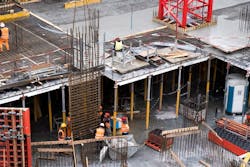HUD offers $4.8 billion in funding for green and resilient building retrofit projects
The Department of Housing and Urban Development (HUD) recently released guidelines for its Green and Resilient Retrofit Program (GRRP) that has $4.8 billion for funding green projects.
Eligible properties could be awarded grants and below-market rate loans to upgrade projects for improved sustainability. HUD currently expects to provide about $2 billion to 600 properties under GRRP’s initial set of awards.
This program offers funding of up to $40,000 per unit, or $750,000 per property, to pay for improvements including electric HVAC heat pumps, Energy Star windows, fire resistant roofs, and clean energy generation systems.
HUD will accept applications on a rolling basis over the next several months, with an emphasis on having benefits flow to historically disadvantaged communities. All properties receiving GRRP funding will be subject to an extended affordability period.
